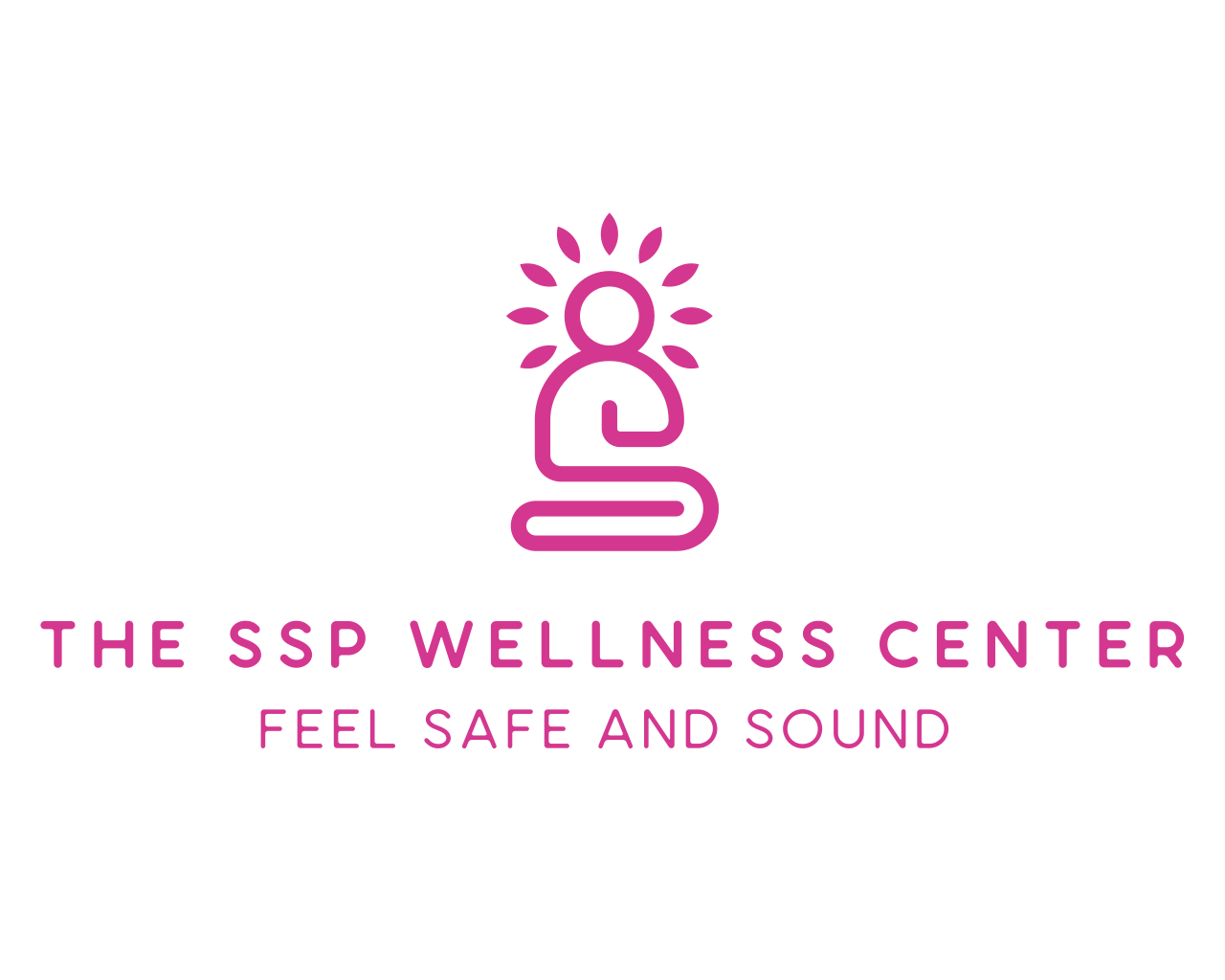The Safe and Sound Protocol (SSP) is a five-hour listening intervention designed to gently reset your nervous system. The original guidelines recommended listening for one hour at a time. Sounds intense, right? Trust us, it is.
If you’re considering SSP, there’s a good chance you’ve already been through a range of therapies and treatments, hoping for relief. Let’s be real—SSP isn’t something you stumble upon. It’s more of a ‘last resort after I’ve tried everything else’ kind of therapy (except this one actually works).
But here’s the thing: if nothing else has worked, it’s probably because your nervous system hasn’t felt safe enough to integrate those practices. And that’s your lightbulb moment right there. You’re welcome.
So now you’ve got a choice. You can finally listen to your nervous system, give it the gentle care it’s asking for, or you can try bulldozing through in the hopes of a quick fix.
But take it from us: when it comes to your nervous system, slow is always better. Always.
In this article, we’ll explore why rushing through SSP is never a good idea. Even if you’re tempted to speed things up just to get to the Taylor Swift songs – there’s no justification for trying to cram in an hour-long session.
Let’s look at why a slow and steady approach leads to the best results—and when, if ever, going faster might be okay.
Why We Go Slow with SSP
The short answer? Because it works best that way. Your nervous system needs time to absorb and process the gentle changes that SSP creates. Going too fast can overwhelm the system, leading to discomfort, side effects, or, in some cases, no results at all.
By going slow, you’re allowing your body to integrate the therapy more effectively. The gradual pace helps your nervous system feel safe, which is essential for healing. Want to dig deeper into the benefits of going slow?
Check out our article on why microdosing SSP is the key to success.
Who is Going Slow Best Suited To?
Honestly? Everyone. Particularly those with complex cases and long histories of dysregulation. If you’ve tried other therapies and felt no lasting relief, that’s a huge clue that your nervous system needs a slower, more careful approach.
And the more dysregulated you are, the slower you need to go. It’s tempting to push through, especially if you’ve been struggling for a long time and are desperate for relief. But the truth is, rushing won’t help. If you’ve found yourself at the point of considering SSP, it’s likely that your body is asking for gentleness.
So, if you’re someone who has been battling chronic issues—whether it’s anxiety, trauma, pain or sensory sensitivities—then trust us, the slower approach will serve you best.
In What Instances Can I Go Faster?
Most of our clients fall into the category we just described—long, complex cases with significant dysregulation, making them perfect candidates for microdosing SSP. However, there are rare cases where we might consider a slightly faster pace.
We use our SSPace acronym to guide the pacing process, assessing key factors like your symptoms, severity, support system, and environment. If after completing all your assessments, you meet the following criteria, you might be considered for a faster pace:
- You have a very supportive network of healthy people around you
- You possess a strong understanding of self-regulation
- You are experiencing minimal symptoms that don’t significantly impact your daily life
- You have no history of heavy trauma
- Your home and work environments are stable and stress-free
- You experience no negative reactions after your first listening session
- You are not on any prescribed medications or undergoing medication withdrawal
- You have no history of mental health issues
But let’s be real—if you’re looking at SSP, you probably can’t check off everything on this list. And that’s okay! SSP is designed to meet you where you are – and that’s why it’s so powerful.
Other Cases Where We May Allow You to Go Faster
There are a couple of other scenarios where we may consider a faster pace:
- You’ve already completed one or more rounds of SSP with us and have reached a stable baseline, responding well to the program – and are now looking for a quick ‘reset’.
- You can demonstrate that you’ve had similar success with another provider and have reached a stable place.

An Example of Someone Who May Be Able to Go Faster
Still not sure if you’re a candidate for a faster-paced program? Here’s an example of what your situation might look like:
You have a stable home life with a loving family and a close circle of friends. You’re in good health, take care of yourself through healthy habits, and love your job, which is going well. Recently, an unexpected event at work caused some extra stress—you lost a key team member and had to step up to deliver a big project quickly. You put in extra hours, lost some sleep, and felt stressed, but now that the project is done, you’re just feeling a little burned out and need a reset.
Or maybe you’re a university student who’s always excelled academically and enjoys a balanced life—spending time outdoors, staying social, and generally feeling good. But recently, you’ve been pushing yourself hard, studying for an important exam. The stress has built up, leaving you feeling drained, disconnected, and not quite yourself. Now that the exam is over, you need a way to reset and get back to your usual, thriving self.
So What Can You Do If That’s You?
If you’re one of the few who can go faster, and you’re looking for minor symptom relief, we’re happy to assess you for a quicker pace. But it comes with a few conditions:
- Max listening time: We will never allow you to listen for more than 30 minutes per session, as set by Unyte.
- Remote support: We’ll provide you with remote “sit-in” sessions instead of granting access to the self-paced course. This way, we can co-regulate with you in real time and support you through any dysregulation that occurs.
- Adjustment: You must be willing to adjust your pace to a slower speed if we notice any signs of over-activation.
If this sounds like a good fit for you, get in touch with us here and we can assess your suitability.

I Don’t Care How Dysregulated I am, I Want to Go Faster
If you’re still determined to rush through your SSP program despite having moderate to high levels of dysregulation, here’s our honest advice:
- Please take the time to read the case studies online of people who’ve taken this approach. At best, they’ve seen no results and wasted their money. At worst, they’ve experienced worsened symptoms and increased dysregulation.
- Find another practitioner who is willing to take this risk with your health—because we won’t.
Our Personal Experience: Going Slow for the Win
If you’re still not convinced, let us share a personal note. When Trever went through SSP at a speed of just 10 seconds per session, he experienced:
- Intense palpitations
- Flashbacks of Complex PTSD
- Trauma responses surfacing
He had to drop down to just 3 seconds of listening to find his sweet spot and minimal activation.
Meanwhile, I had to drop from one-minute sessions to 30-second sessions to avoid:
- Panic attacks
- Entering a freeze state
- Tearful outbursts
From a Client Perspective
Jane felt pretty good at 1 minute of listening. She was sleeping deeper, had more energy in the morning, and felt less anxious overall. Her activation was minimal and manageable.
When we tried 2 minutes, she experienced slight dizziness, poorer sleep, and increased mild tinnitus. We paused her program for a few days and went back to 1 minute, and she quickly returned to her comfortable baseline and continued to progress.
Dylan was thriving at just 10 seconds of listening. Given his history of severe and complex conditions from a brain injury, we knew to take it slow. After 2 weeks at 10 seconds, he showed improved self-regulation, better sleep, a brighter mood, and reduced OCD symptoms.
We tested 15 seconds, but that was a bit too much, leading to worsened behaviors and a return of OCD. Once we returned him to 10 seconds, his symptoms settled back down.
See how minor those shifts were? A matter of seconds and minutes may not feel like much – but it can make a HUGE difference.
Now, that doesn’t mean you’ll need to go quite that slow – some of our clients thrive on 1 minute of listening – others on 10. But it DOES show just how critical finding the right pace is for you. And remember—your pacing will likely increase over time as your system becomes more regulated and you move through the program.
At the end of the day, going slow doesn’t mean staying stuck. It means allowing your nervous system the time and space it needs to heal deeply. And that, in our experience, is always the best path forward.

